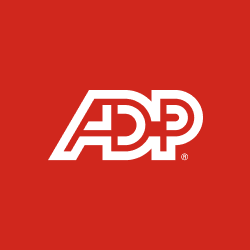Working full time while there is a young child or an ill family member at home is a juggling act. Employees often become torn between their personal and career responsibilities. They may call out of work unexpectedly or exhaust all their paid time off (PTO) caring for their loved one. Employers can help alleviate some of this stress for their employees and improve productivity, engagement and retention in the process by offering dependent care FSA benefits.
Table of Contents
What are dependent care FSA benefits?
A dependent care FSA is an employer-sponsored benefit that helps employees manage expenses associated with caring for a qualified dependent, such as a child or incapacitated family member. It’s sometimes called a dependent care assistance plan (DCAP).
How do dependent care FSA benefits work?
Employees who enroll in a dependent care FSA contribute a portion of their compensation to cover the cost of dependent care services necessary for them to work. Their employer deducts these contributions via pretax payroll deductions.
Generally, as employees incur qualified dependent care expenses, they pay them out of pocket and then apply for reimbursement from the FSA. In some cases, participants may receive a spending account card, which works like a bank debit card and provides immediate reimbursement.
Dependent care FSA contributions
Under federal law, an employee is limited to contributing the smallest of the following amounts:
- $5,000 if the employee is married and filing a joint return or is a single parent
- $2,500 if the employee is married but filing separately
- The employee's “earned income” for the year – or –
- If the employee is married at the end of the taxable year, the spouse's earned income
Employers have the option to set a limit lower than the amounts listed, but not in excess. Any contributions to a dependent care FSA that exceed the imposed limit during a calendar year are treated as taxable income.
Once employees choose how much they will contribute for the year, they cannot change it unless they experience a qualifying event, such as a change in marital status, employment status or the number of dependents.
Dependent care FSA coverage
Dependent care FSA coverage is not uniform throughout the year, meaning that the funds available at any given time are limited to the total contributions made to date, minus any prior reimbursements. If any funds remain in the account at the claim filing deadline for the year, the balance generally is forfeited.
Employers, however, may allow participants to use outstanding year-end balances to reimburse expenses for qualified dependent care benefits incurred during a grace period of up to two months and 15 days following the close of the plan year.
Dependent care qualifications
To participate in a dependent care FSA, employees must have dependents who meet one of the following criteria:
- Any qualifying children who have not attained the age of 13.
- Spouses who aren’t physically or mentally able to care for themselves and have lived with the employee for more than half the year.
- Any other people who aren’t physically or mentally able to care for themselves and have lived with the employee for more than half the year. The person in question must also be a dependent of the employee or would have been a dependent if not for certain exclusions.
See IRS Publication 503 for more specific details.
What does dependent care FSA cover?
While a dependent care FSA certainly has financial advantages, it’s not an all-encompassing solution. Reimbursements may be limited to the following types of dependent care:
- Application fees and deposits for care provided
- Child or adult daycare
- Transportation services
- Day camps
- Before- and after-school care
As a general rule of thumb, the care provided must make it possible for an individual and their spouse (if married) to work, seek employment or attend school full-time. Overnight camps, enrichment programs, private school tuition and child support payments do not meet this standard and may not be reimbursed. Additionally, a dependent care FSA does not reimburse medical expenses for dependents.
Child and dependent care tax credit
If employers choose not to offer a dependent care FSA, their employees are not without other options to help them manage dependent care costs. One of them is the child and dependent care tax credit, which offsets a percentage of work-related expenses paid to a childcare provider for the well-being and security of a qualified dependent. The qualifications are the same as those previously outlined for a dependent care FSA.
The total credit available depends on the employee’s adjusted gross income and the number of qualified dependents. The maximum tax credit limit is $3,000 for employees with one qualifying person or $6,000 for employees with two or more qualifying persons.
Depending on individual circumstances, the child and dependent care tax credit may be more beneficial than enrolling in a dependent care FSA. However, individuals may not claim the tax credit for childcare expenses reimbursed under a dependent care FSA.
Frequently asked questions about dependent care benefits
What are the benefits of dependent care FSA for employers?
Dependent care FSA benefits are important to many working parents. Employers who offer them may be able to:
- Decrease unplanned absenteeism
- Improve productivity and engagement
- Attract and retain talent
- Reduce stress and workplace disruptions
Can employers contribute to their employees' dependent care FSAs?
Employers can contribute to an employee’s dependent care FSA if the written employer plan allows it. However, the combined pretax contributions between the employer and employee cannot exceed the IRS annual maximum.
Who is responsible for managing use of a dependent care FSA?
In general, the plan sponsor owns and manages dependent care FSAs. If employees separate from their employer or don’t use all of their funds by year’s end, they forfeit the remainder of the money and it is retained by the plan sponsor. However, employers may permit employees who no longer participate in a dependent care FSA (e.g., due to termination of employment) to be reimbursed from their outstanding account balances for eligible expenses incurred during the remainder of the plan year.
Are dependent care FSA benefits taxable?
As long as they don’t exceed the IRS limit, contributions to a dependent care FSA reduce an employee’s taxable income. Any contributions that surpass the annual maximum are subject to the requisite taxes.
Can you claim both the child tax credit and dependent care credit?
Individuals may claim both the child tax credit and the child and dependent care tax credit if they meet all the qualifying criteria and file the necessary forms. However, they may not claim the child and dependent care tax credit for childcare expenses reimbursed under a dependent care FSA.
In addition, the amount contributed to the dependent care FSA and claimed under the dependent care tax credit cannot exceed the applicable IRS limit. When determining the allowed dependent care tax credit base amount, the contributions to a dependent care FSA are subtracted from the dependent care tax credit maximum.
Example 1:
Employee A with one qualifying dependent incurs $5,000 in dependent care FSA expenses. The $5,000 is subtracted from the $3,000 dependent care tax credit allowed for one qualifying individual. $3,000 - $5,000 = -$2,000, leaving employee A with $0 base amount to calculate a tax credit. Therefore, employee A cannot claim any amount of a dependent care tax credit.
Example 2:
Employee B with two qualifying dependents incurs $5,000 in dependent care FSA expenses. The $5,000 is subtracted from the $6,000 dependent care tax credit allowed for two or more qualifying individuals. $6,000 – $5,000 = $1,000, leaving Employee B with $1,000 base amount to calculate a dependent care tax credit. The actual dollar amount of the credit will depend on the employee’s adjusted gross income.
This article is intended to be general in nature. It should be used as a starting point in analyzing dependent care benefits and is not a comprehensive resource of requirements. It offers practical information concerning the subject matter, which is provided with the understanding that ADP is not rendering legal or tax advice or any other professional services. You should seek guidance from your personal business advisor(s) if you need specific advice for your business.




